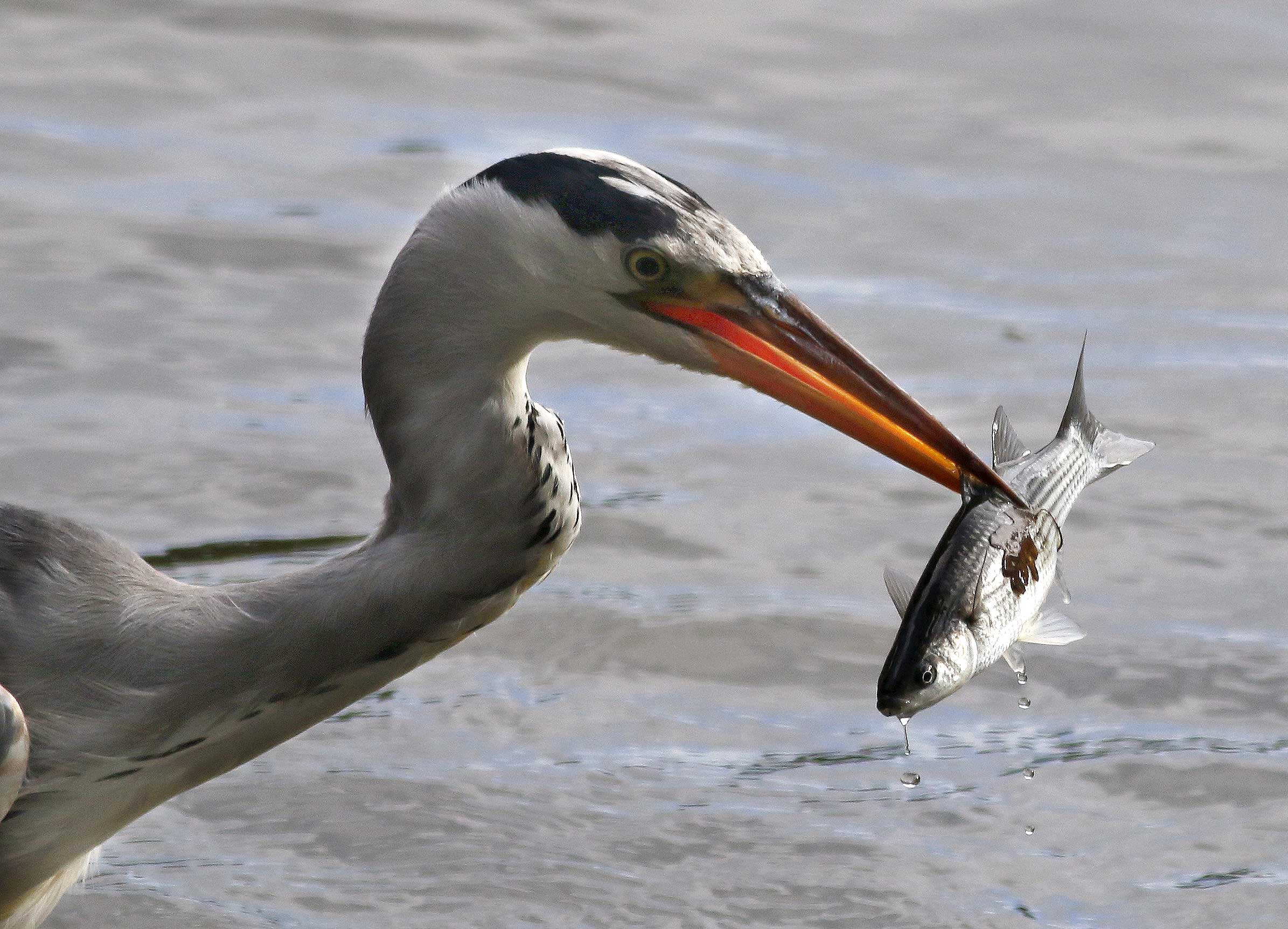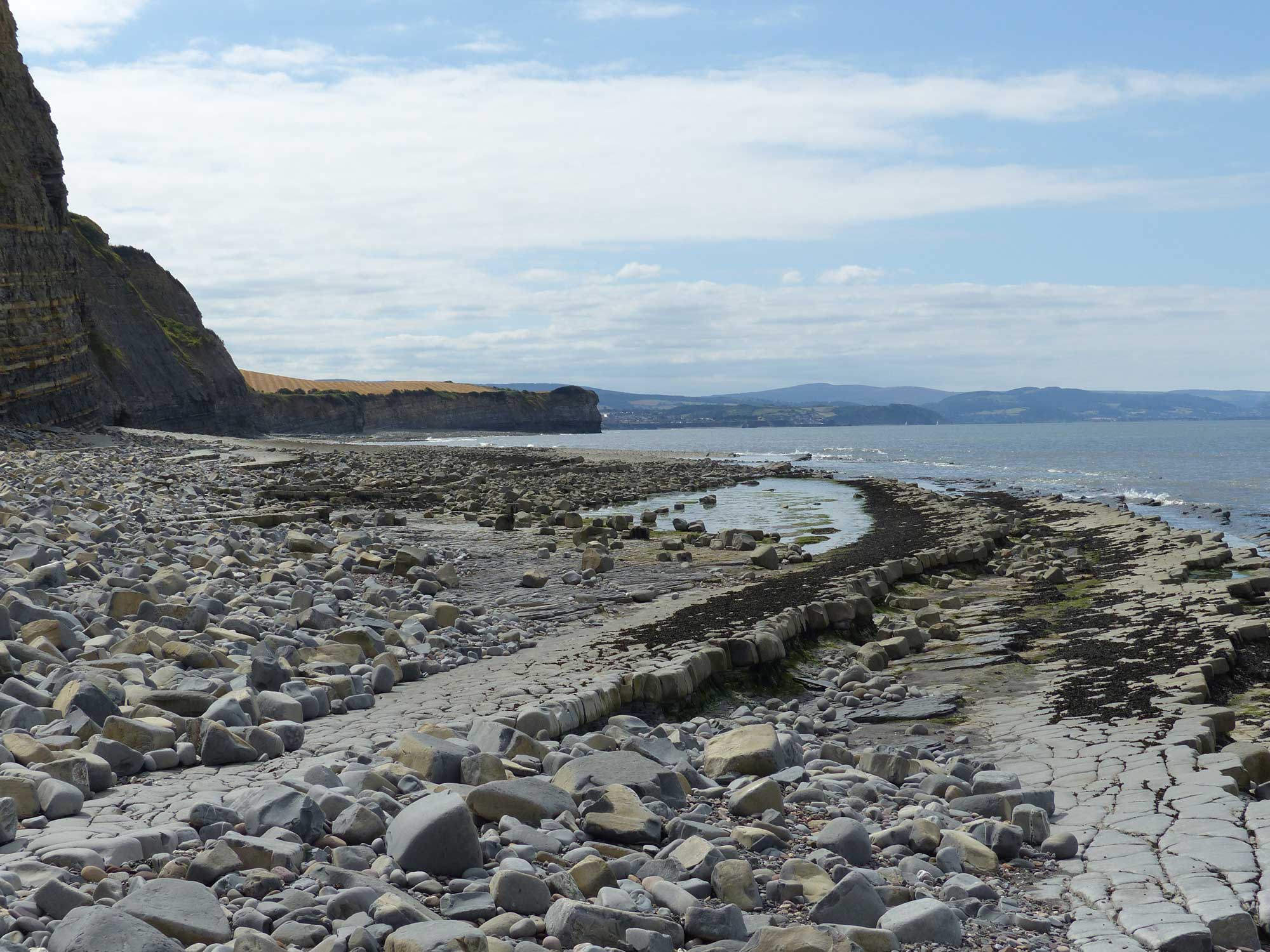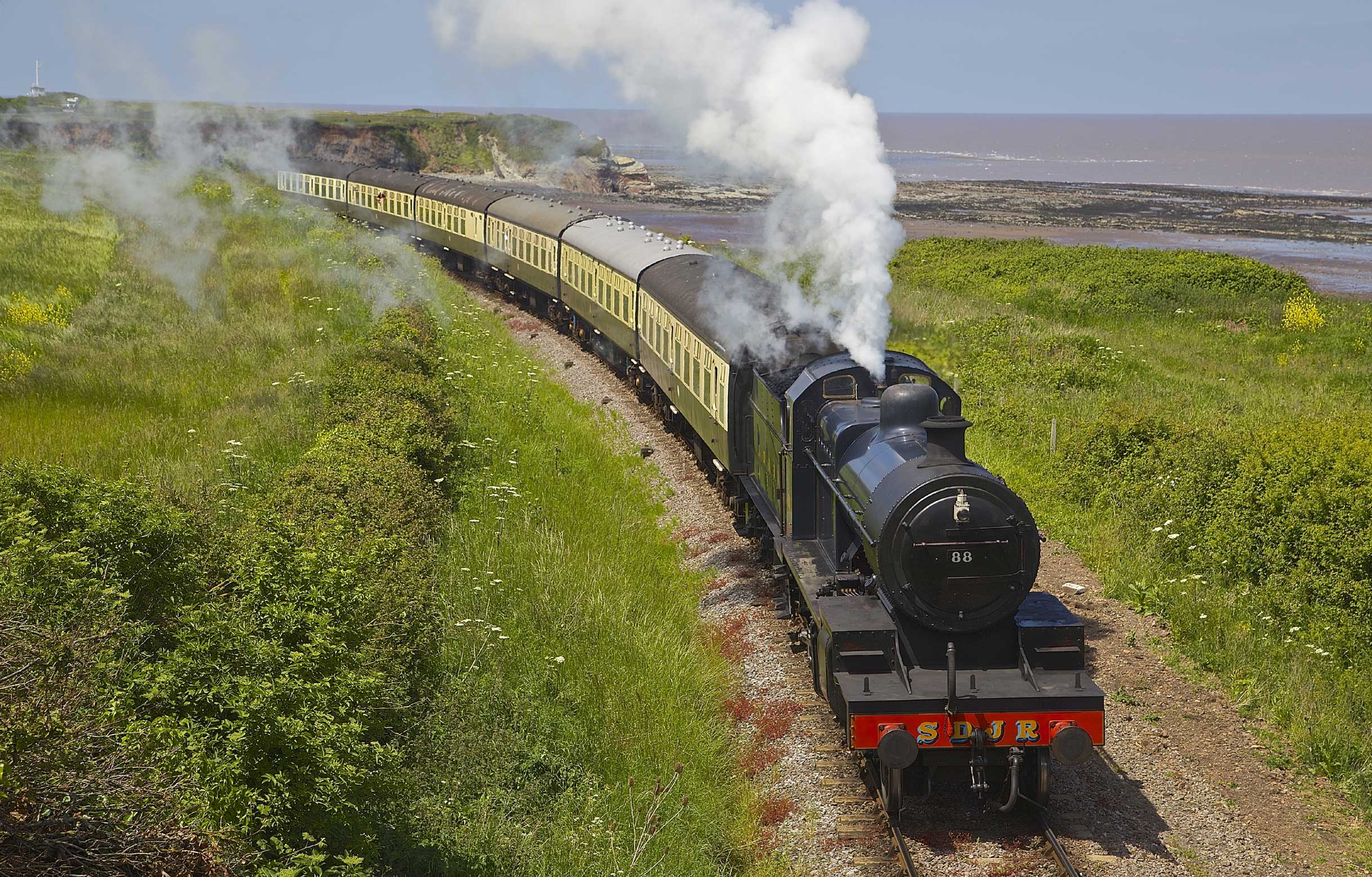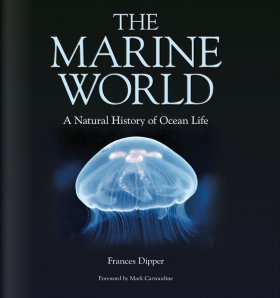-
|
| MARINE
LIFE NEWS
Reports
of marine wildlife from all around the British Isles, with pollution incidents
and conservation initiatives as they affect the flora and fauna of the
NE Atlantic Ocean
28
November 2016
The
adult Olive Ridley Turtle,
Lepidochelys
olivacea, was recovering at
Anglesey
Sea Zoo and is now feeding on oily Mackerel
which are easy to digest. This was confirmed as the very first Olive
Ridley Turtle recorded in British seas.
27
November 2016
A
large baleen whale,
about 12 metres in length, was spotted struggling in very shallow water
at Cross
Beach, Killadoon, County
Mayo, western Ireland The whale
was effectively stranded but as the incoming tide
rose, surfers from nearby managed to encourage it away from the beach and
it eventually managed to swim away in a northerly direction. Photographs
did not confirm which species it is but at this size it is likely to be
either a Fin or Sei Whale.
Unfortunately, the outlook for the mammal is
poor as it is likely to be ill or injured when found so close to shore
and there is a strong possibility that it will restrand in the coming days.
12
November 2016
All
the way from tropical seas, a large olive green adult Ridley
Turtle, Lepidochelys,
was discovered in a moribund condition but still alive, on the sandy shore
of the Menai Strait,
at Tan-y-Foel very close to Anglesey
Sea Zoo, north-west Wales. Undoubtedly suffering in the cool waters
off north Wales, the turtle was warmed up and nursed by local vet and rehabilitated
at Anglesey Sea Zoo. (At the time of writing
it is not sure if the turtle
was healthy enough to recover.)
""This
individual is much larger than any other Kemp's
Ridley Turtle, Lepidochelys
kempii,
documented
as stranding in the UK, previously we have always recorded juveniles here,"
said marine expert Rod Penrose, from the UK
Cetacean Strandings Investigation Programme."
BMLSS
Turtles
30
October 2016
Over
forty Killer Whales, Orcinus
orca, were spotted 12 miles south-east
of Sumburgh
Head, the southernmost headland of Shetland. Large fishing trawlers
were also there and it was surmised that the Killer
Whales were also after the Mackerel.
12
October 2016
Have
you have ever wondered why fish and other organisms end up in strange places?
Most are doomed to perish as their new environment is alien, outside of
the natural "ecological
amplitude" for survival. Some colonise their new habitats and
some become pests and unwanted aliens.
There
is very little chance of natural long term survival of these tropical fish
and invertebrates that arrived in a moon pool (an open pool in the middle
of the boat) on a ship in Stavenger,
Norway, from the Gulf
of Mexico.

More
Crustacean Images
by
Vivian
Husa on Crustacea
of the NE Atlantic & NW Europe
facebook
(Gulf
of Mexico to Norway)

Eksotisk
økosystem på reisefot
Exotic
Ecosystem Travelling (the Full Report)
Institute
of Marine Research, Bergen
FORUM
NEWS
Marine Wildlife
of the North-east Atlantic Ocean Mailing Groups
.jpg)
Marine
Wildlife of the North-east Atlantic Ocean
Yahoo
Group
New
Group:
http://uk.groups.yahoo.com/group/Glaucus

British
Marine Life Study Society
facebook
Page:
https://www.facebook.com/groups/glaucus/
This
is designed for quick less important chatty news items. Photographs can
be uploaded quickly which is only possible on the Yahoo Group by going
to the web page.

Images can be
uploaded to flickr.
http://www.flickr.com/groups/glaucus/
Wet
Thumb (Marine Aquariology) Forum Link


|
Lots
of marine wildlife reports from Shetland on facebook
Photographs
include undersea, sea mammals and birds.
Click
on the image to connect |

All
reports by Andy Horton unless the credits are given
to
other observers or reporters.
Cornish
Marine Wildlife (Ray Dennis Records) 2009
|
PICTURE
GALLERY
Each
month, at least one special marine image will be published from images
sent to the BMLSS. This
can be of the seashore, undersea world or any
aspect of the marine natural world, especially the underwater life, but
not restricted to life beneath the waves. Topical inclusions may be included
instead of the most meritorious, and images will be limited to the NE Atlantic
Ocean and adjoining seas, marine and seashore species and land and seascapes.

Grey
Heron,
Ardea
cinerea, capturing a juvenile Grey Mullet,
Chelon
labrosus
at
Spinnies
Nature Reserve, Bangor, North Wales
Photograph
by Steve Ransome
First
year Grey Mullet,
Chelon
labrosus, visit southern estuaries
in very tight shoals numbering from small groups of about fifty seen in
late summer to huge shoals of fish over a million strong, each one about
25 to 30 mm long. Adults are usually more noticeable in the muddy shallows
and the numbers of young Grey Mullet
are highly variable in numbers. Such prolific prey are bound to to attract
the attention of predators like the Grey Heron.
Sometimes the shoals can get trapped in lagoons
as the tide recedes.
Click
on the images for the original photographs or links to more images
flickr
MARINE
LIFE of the NE Atlantic GALLERY
Shorewatch
Biological Recording
Gallery
---------------------------------------------------------------------------------------------------------------------------------------------------------------
Shore
Topography Series
The
name of the particular coast should be included and any other interesting
information including the grid reference, if known. Print photographs can
be included in Exhibitions and on the BMLSS Web
Sites
and electronic publications.
Electronic
images in *.jpg
format can also be considered for the web site. They should not exceed
1 Mb in size.

East
Quantoxhead Beach, looking west towards Minehead,
Somerset
Photograph
by Rachel Hartland
Rocky
shores are best for rockpooling and the southern
and western coasts are the richest in variety.
This
hard
to reach north-facing Somerset rocky shore, backed by high eroding
cliffs of Lower Jurassic
limestone
that deposits large rocks on the limestone undercliff platform, including
revealed fossils of ammonites,
sea reptiles, ancient fish, molluscs and echinoderms. The waves pounding
on the bedrock sculptures rock pools and there are large numbers of rocks
and boulders for fish and crabs etc. to hide under.
Quantoxhead
SSSI Fossils
The
tidal
range at nearby Minehead
(Bristol Channel)
is a massive ten metres plus and low spring tides
occur at dawn and dusk. Beware of being cut off by the tide.

With Helwell Bay in
the background, S & DJR 7F 2-8-0 No. 88 approaches Doniford working
the 12:45 Minehead to Bishops Lydeard during the West Somerset Railways
Mixed Traction Weekend event, on 9th June 2013.
Photograph
& Notes by Neil
Prior
The
West
Somerset Railway (Heritage) runs for 20 miles from Bishops
Lydeard to Minehead
with views of the sea and beach (Helwell
Bay) from Donifold
Halt (request stop) to Watchet.

Click
on the map for a larger image
Click
on the images for the original photographs or links to more images

flickr
British
Coastal Topography
.jpg)
facebook
British
Coastal Topography
----------------------------------------------------------------------------
First
enquiry by EMail
to Glaucus@hotmail.com

-----------------------------------------------------------------------
Photographers
submitting pictures should indicate if they wish them to be considered
for inclusion as confirming permission takes work and time and can delay
publication of the news bulletins.

Click
on the album for more links (On-line link)
|
|
EVENTS
& DIARY
In
chronological order, the most recent events are at the top of the page.
Events open to the public, free or for a nominal charge only are included.
Most Seminars need to be booked in advance.
 |
For
details of the Porcupine Marine Nature History Society meetings click on
the link on the left
|
|
| PUBLIC
AQUARIA NEWS |
| Public
Aquaria List |
| CETACEAN
NEWS |
|
? What
to do if you find a stranded whale or dolphin ?

|
If
you find a LIVE stranded or injured whale or dolphin on the beach you must
send for help QUICKLY. A whale or dolphin stranding is an emergency and
the speed of response by a professional rescue team is perhaps the most
crucial factor in determining whether or not an animal can be returned
to the sea alive.
|
ENGLAND
|
WALES
|
SCOTLAND
|
|
0300 1234
999
|
0300 1234
999
|
0131 339
0111
|
|
CORNWALL
|
JERSEY
|
GUERNSEY
|
|
0845 201
2626
|
01534 724331
|
00 44 1481
257261
|
Would you know what to
do if you found a whale stranded on a beach?
Each year anywhere between
five and 50 whales, dolphins and porpoises are washed up on Britain's beaches.
British
Divers Marine Life Rescue, a volunteer charity, was set up in 1998
to rescue them.
BBC
News Report
LINK
TO THE STRANDINGS PAGE
|
|
PUBLICATIONS
&
WEB PAGES
BOOKS
PUBLICATIONS
NEW
BOOKS

Shallow Seas (Collins
New Naturalist Library)
by
Peter Hayward (Author)
The
Marine World: A Natural History of Ocean Life

The Marine World
Includes
sections on all but the most obscure marine groups, covering invertebrate
phyla from sponges to sea squirts, as well as plants, fungi, bacteria,
fish, reptiles, mammals and birds
Incorporates
information on identification, distribution, structure, biology, ecology,
classification and conservation of each group
by:
Frances Dipper (Author), Marc Dando (Illustrator), Mark Carwardine (foreword)
544
pages, 1500+ colour photos, colour & b/w illustrations, colour tables
Wild
Nature Press
Click
on the book pictures for more information
The
Essential Guide to Beachcombing and the Strandline
This
richly
illustrated guide will become a steadfast companion for beach visitors
wishing to identify what the sea washes up
By:
Steve Trewhella (Author), Julie Hatcher (Author)

304
pages, colour photos, b/w illustrations
Wild
Nature Press

ESSENTIAL PURCHASE
*****
----------------------------------------------------------------------------------------------------------------------------------

Encyclopaedia
of Marine Life of Britain and Ireland
http://www.habitas.org.uk/marinelife/index.html?item=about
Marine
Fauna of Norway
http://www.seawater.no/fauna/e_index.htm

WET
THUMB (Marine Aquariology)
EFORUM
PAGE
BMLSS:
Marine Life Articles in Publications (Link)
|
SOCIETY
INFORMATION
The
British Marine Life Study Society are responsible for producing the journal
GLAUCUS,
which is the first publication exploring the marine life of the seas surrounding
the British Isles available to the general public. In
future, I expect the publication to be in an electronic format.
-------------------------------------------------------------------------------------------------------------------------
EMail Address
 EMail
address for messages to the British Marine Life Study Society EMail
address for messages to the British Marine Life Study Society
----------------------------------------------------------------------------------------------
Membership 2016
Please
join the facebook
group for free. Formal membership of the Society has ceased. Back
copies of previous issues are still available.
|
|
Bulletin
Details
For
technical reasons, TORPEDO is no longer being sent out by EMail. It is
simply easier to view the bulletins on the web pages.
Subscribe/Unsubcribe
http://groups.yahoo.com/group/BMLSS-Torpedo
The
Bulletin is designed to be viewed on Internet Explorer using medium fonts
at a resolution of 1024 x 768.
Viewing
should be possible on Mozilla and other browsers. |
29 November 2016. Amended 1 December 2016
|
Copyright
2016 ©
British Marine Life Study Society
---------------------------------------------------------------------------------------------------------------------------------
Compiled
on Netscape Composer 4.6 and other programs
|

